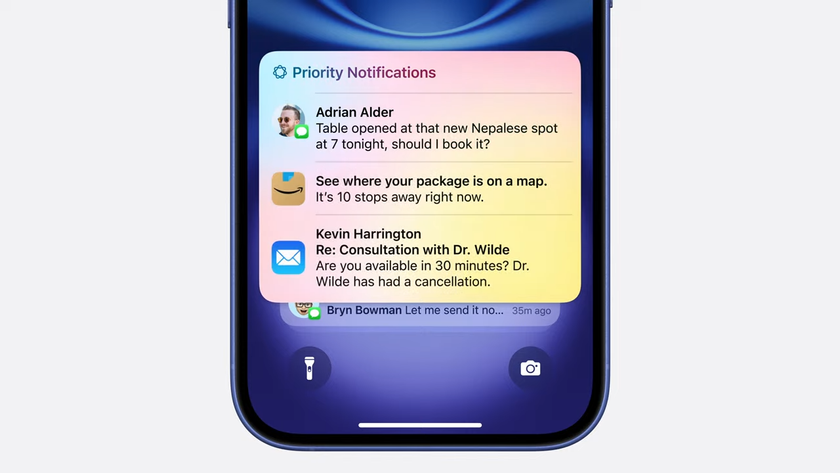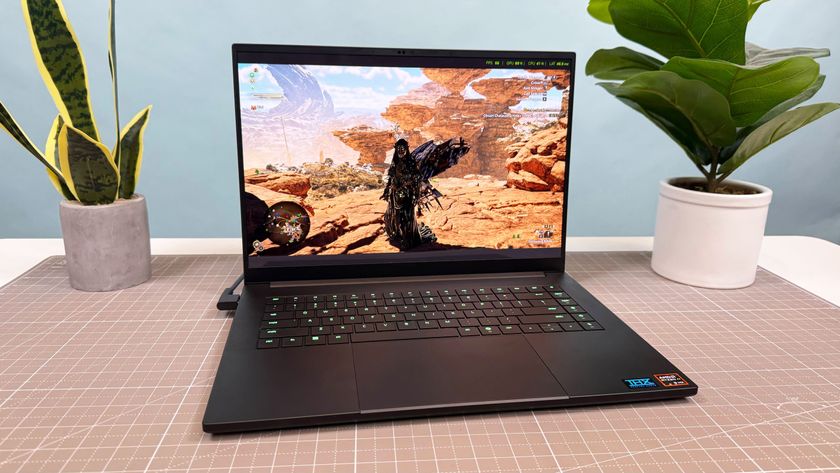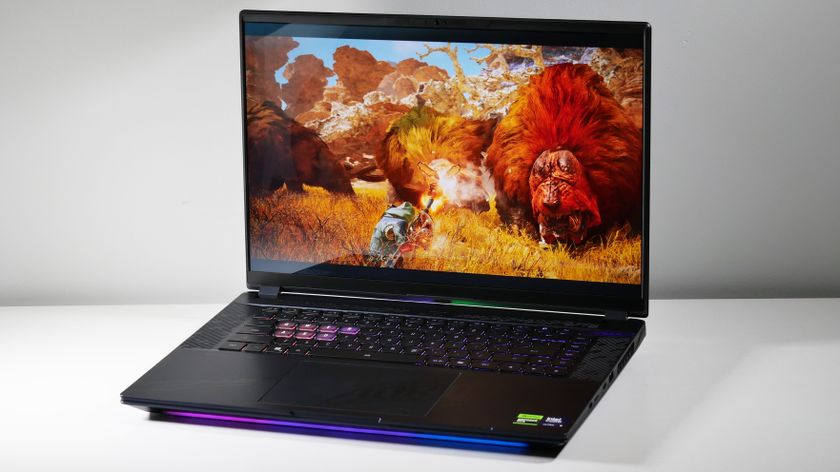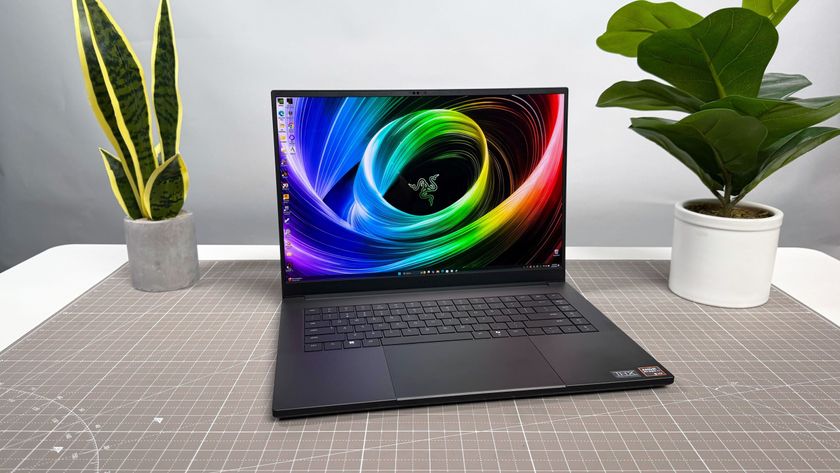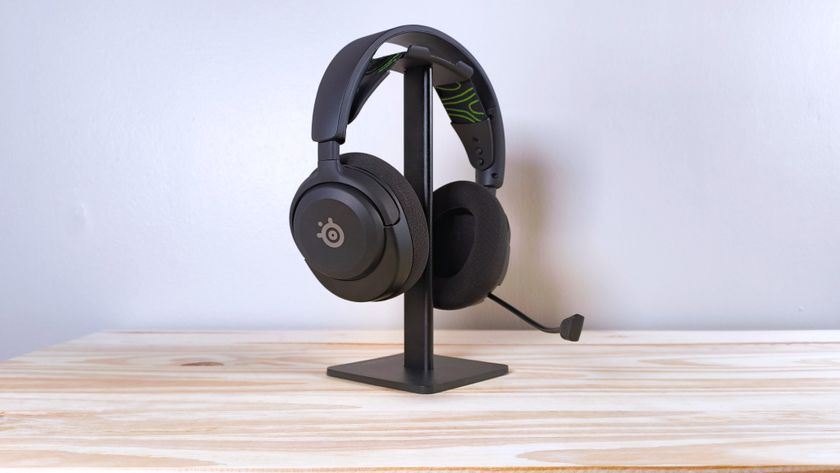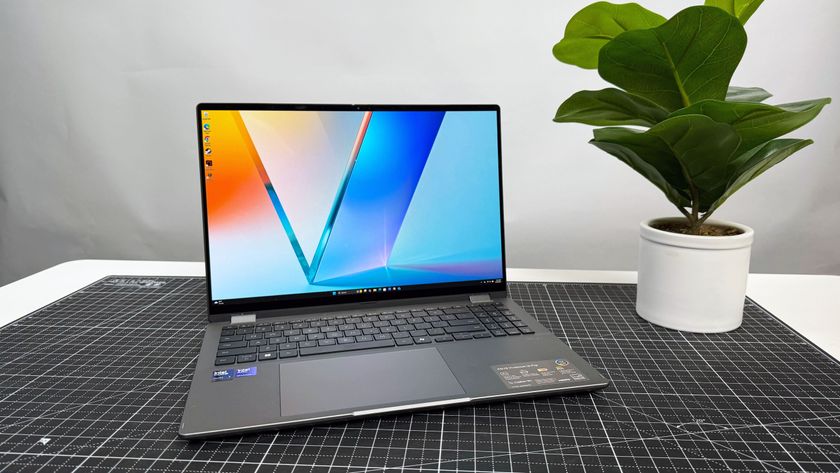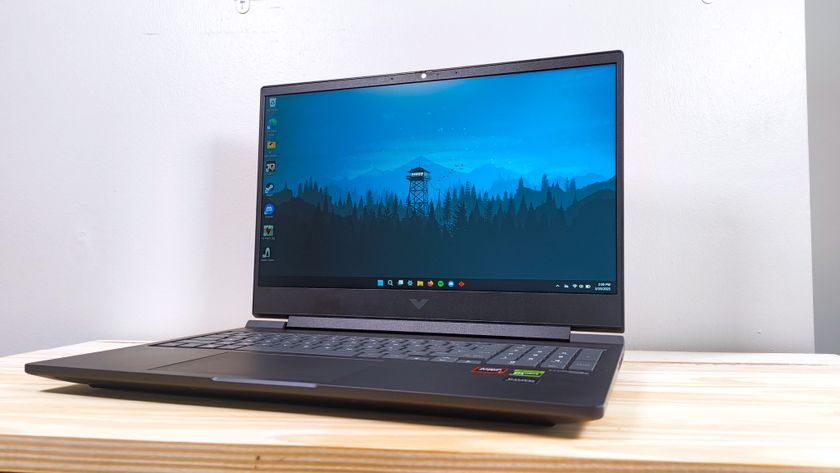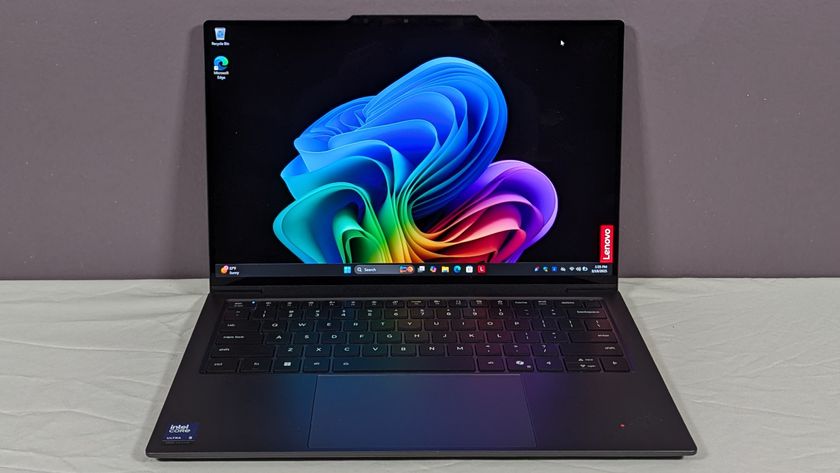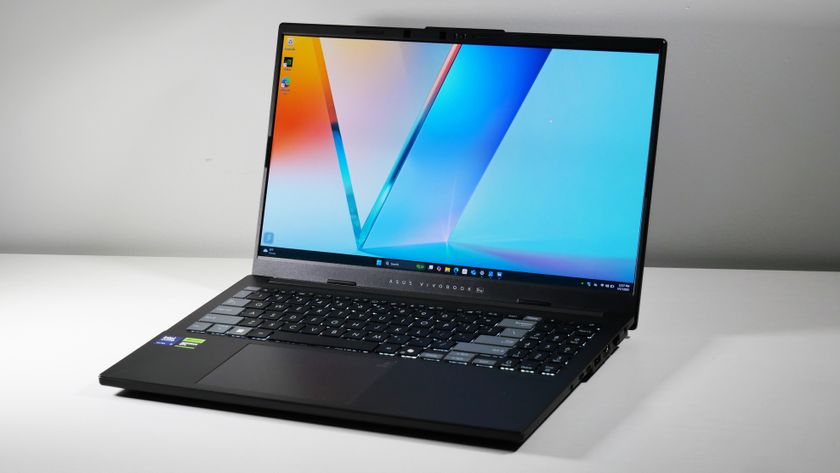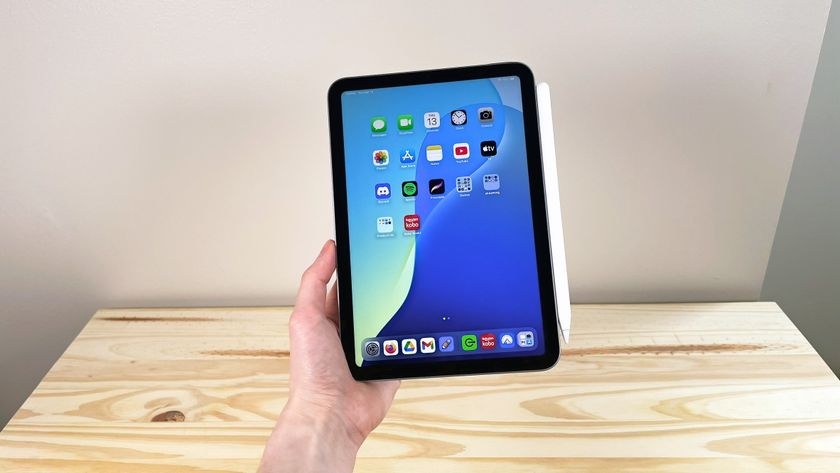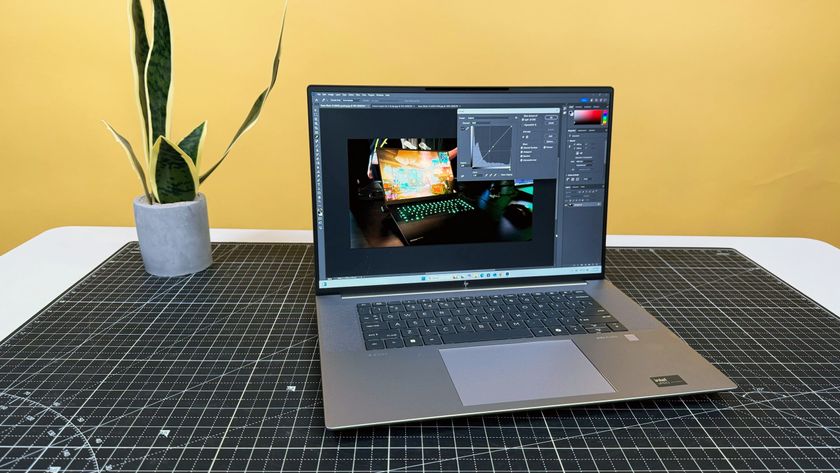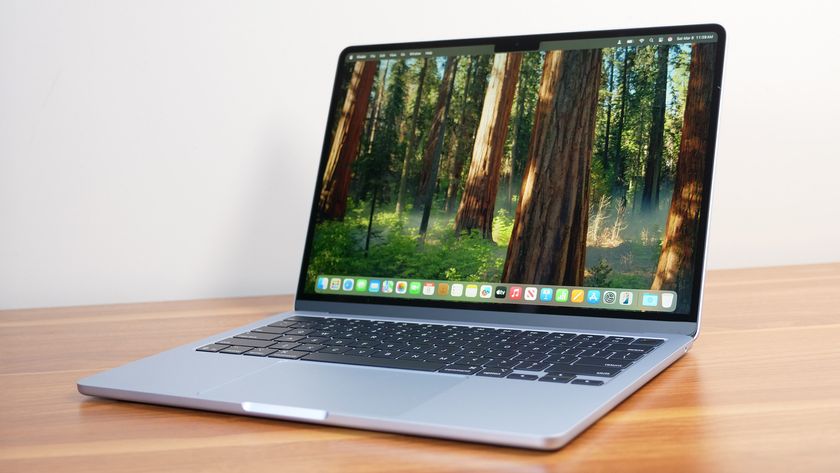Laptop Mag Verdict
Samsung's $99 Galaxy Rugby Pro is a rugged and fast 4G LTE phone that can easily shrug off life's bumps and spills.
Pros
- +
Tough, durable design
- +
Above average performance
- +
All-day battery life
- +
Lightning fast 4G LTE speeds
Cons
- -
Running old Ice Cream Sandwich
- -
Display could be brighter
- -
Slow camera
Why you can trust Laptop Mag
Your average smartphone is about as durable as a china doll. Drop it once while fumbling with your keys, and your phone's chassis will crack and its screen will shatter. And don't even try getting it wet. The $99 Samsung Galaxy Rugby Pro from AT&T is designed to withstand all that and more. This 4-inch Android phone comes wrapped in a armorlike chassis that meets U.S. Mil-STD 810F standards for everything from rain and dust to shock and falls. But can it stand up to our scrutiny?
Design

Click to EnlargeThe Galaxy Rugby Pro looks like the kind of smartphone RoboCop would carry while patrolling Old Detroit. The Pro's front features a scratch-resistant 4-inch display surrounded by a thin black bezel. To the left of the earpiece, you'll find the Rugby Pro's 1.3 megapixel front camera. Beneath the display, Samsung fit three physical Back, Home and Settings buttons.

Click to EnlargeThe Rugby Pro's sides are covered in a rubberized material that adds a healthy amount of grip to the phone. The right side houses the power/lock button, while the left side has the Pro's volume rocker and a customizable key to which users can assign a specific app. For instance, if you sign up for AT&T's enhanced push-to-talk service ($5 per month) you could use the shortcut key for that Android app. Or you could use the button to fire up the camera.
The phone's 3.5mm jack and microUSB port, located on its top and bottom edges, respectively, are covered in removable waterproof gaskets. The Pro's hard plastic back panel includes a metal locking mechanism to ensure it doesn't pop off and stays sealed under water. This cover also has a reassuring textured finish.
Measuring 5.0 x 2.7 x 0.5 inches and weighing 4.6 ounces, the Galaxy Rugby Pro is a bulky phone. It's both larger and heavier than the 3.5-inch Kyocera Hydro (4.5 x 2.4 x 0.5 inches and 4.2 ounces) and neck-and-neck with its predecessor, the Samsung Rugby Smart (4.8 x 2.6 x 0.5 inches and 4.4 ounces). In fact, the Galaxy Rugby Pro is only a mere 0.1 ounces lighter than the much larger Galaxy S III (5.4 x 2.8 x 0.3 inches, 4.7 ounces).
Durability

Click to EnlargeThe Galaxy Rugby Pro's tanklike exterior isn't just for show. Samsung says the device meets U.S. Mil-STD 810F specifications for dust, rain, humidity and shock resistance. And just in case your Pro takes an unexpected swim, Samsung says the phone can be submerged in up to 1 meter of water for as long as 30 minutes with its port covers sealed.

Click to EnlargeWe dropped the Rugby Pro in a glass vase filled with water and let it sit for 30 minutes. When 30 minutes was up, we pulled the phone out, dried it off and it worked as if it was never wet. For our next torture test, we dropped the Rugby on the sidewalk at least three times, and the only evidence was a scratch mark here and there.
Of course, the Rugby Pro can't survive everything you throw at it. In one extreme case, we chucked the handset roughly 30 feet across a room. The back panel popped off, despite being locked, and the chassis was cracked. However, the phone was still operable.
Display and Audio

Click to EnlargeWhile the Galaxy Rugby Pro's 4-inch AMOLED screen produces vibrant colors, it offers a relatively low 800 x 480 resolution. Still, text was sharp and images were crisp, if only a bit pixelated. While watching a 1080p trailer for "Iron Man 3," the light blue of Tony Stark's arc reactor streamed through the smoke and haze following an explosion. There were no detectable artifacts.
The biggest knock against the Rugby Pro's display is its 220 lux brightness rating. By comparison, the average smartphone registers 299 lux on our light meter, while the Kyocera Hydro's 3.5-inch 480 x 320 low-resolution display offered a significantly higher 394 lux.
Overall, the Rugby Pro's back speaker produced crisp and clean audio. While listening to Kanye West's "Cold," the rapper's gravelly voice came through with plenty of volume, although bass was lacking.
Software and Interface
Click to EnlargeAlthough Google's Android Jelly Bean software has been running on phones since mid-July, the Galaxy Rugby Pro comes with the older Android Ice Cream Sandwich OS. This means that, at least for now, you can't enjoy features like Google Now and offline voice typing.
On the plus side, Samsung augments the OS with its own TouchWiz interface, which has some advantages. For instance, you can toggle Wi-Fi, Bluetooth, Airplane mode and more using shortcuts in the notification drawer.
The main home screen features a Google search bar and AccuWeather.com widget. Other widgets include one that pulls in your friends' Facebook updates and a YP search bar.
While the Rugby Pro doesn't offer the same level of functionality as Samsung's Galaxy S III, it does include some the latter phone's coolest features. You'll find the Siri-like S Voice and S Beam, which allows users to transfer photos, music and other large files with a tap.
Performance
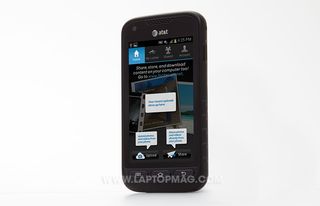
Click to EnlargeSamsung teams the Galaxy Rugby Pro's 1.5-GHz dual-core Qualcomm MSM8960 processor with 1GB of RAM, giving users more than enough horsepower to handle everyday tasks. We easily flipped through the multiple home screens without lag, and games such as "Angry Birds Star Wars" and "Dead Trigger" ran well.
On the CPU Benchmark test, the Rugby Pro scored 4,643, far better than the category average of 2,985. The Kyocera Hydro, which runs on a 1-GHz single-core Qualcomm Snapdragon chip and 512MB of RAM, could only muster 1,951.
The Rugby Pro and Hydro were much closer on the An3DBench test, which measures graphics performance. The Samsung notched 7,380 to the Kyocera's 7,368. But the Rugby once again pulled away in the Quadrant test, which measures CPU, graphics and I/O performance, scoring 5,141 versus just 2,139.
The Galaxy Rugby Pro includes 8GB of internal memory, but makes up for that with its microSD card slot, which supports up to 32GB of storage.
Web Browsing and 4G
Click to EnlargeThe Galaxy Rugby Pro sports a slightly modified version of the standard Android Web browser. The biggest change to the app is a sharing bar at the bottom of the screen that allows users to quickly send websites to friends via Facebook, Twitter, email and more. The bar also gives users access to AT&T's Yahoo-powered Entertainment, News and Sports websites. If you want a cleaner experience, just download Chrome.
Near our New York City office, we saw average download speeds of roughly 15.4 Mbps and upload speeds of 12.5 Mbps. Websites loaded swiftly as well. The New York Times' mobile site popped on our screen in just 2.8 seconds, ESPN mobile loaded in 2.7 seconds and the full desktop site Laptopmag.com loaded in a mere 4.9 seconds.
Apps
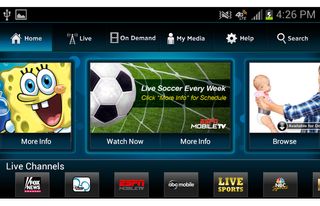
Click to EnlargeOur Galaxy Rugby Pro came with a slew of both first- and third-party apps. In addition to the standard set of Google apps such as Gmail, YouTube and Google Play Store, the Pro came loaded with Samsung's aforementioned S Voice and S Beam. Samsung's Kies Air and AllShare allow users to wirelessly share media on a compatible TV or other device.
Third-party apps featured on the Rugby Pro include Amazon's Kindle app, Qik Lite video streaming and sharing service, Riptide GP and YPmobile. AT&T-ware includes Code Scanner, AT&T FamilyMap, AT&T Locker, AT&T Navigator (skip), AT&T TV and AT&T Smart Wi-Fi.
Camera and Camcorder

Click to EnlargeThe Rugby Pro's rear-facing 5-megapixel camera produced crisp photos of the busy streets outside our New York office. We did notice a bit of haze in images with alternating amounts of sunlight, but for the most part, our photos looked fine. Panorama shots were especially impressive, with the stitching between joined frames barely visible (see gallery).

Click to EnlargePortraits taken with the phone's front-facing camera were equally as striking (see what I did there?).
Our one gripe with the Galaxy Ruby Pro's camera was the amount of time it took to take a photo. A solid second would pass from the time we pressed the shutter button on the touch screen to the time the camera finally took a photo. If you're trying to catch a spontaneous moment, that one second means the difference between getting the shot you want and not.
The rear camera shoots video at a resolution of 1280 x 720 pixels. Unfortunately, our video turned out grainier than we expected, and the slight haze we saw in still photos was far more pronounced.
[sc:video id="lqczNqcTrVGVCK6iwqh-PFwgx6-GTbrw" width="640" height="410"]
Call Quality and Battery Life
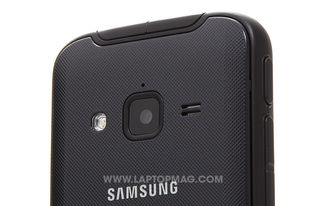
Click to EnlargeCall quality over AT&T's network was clear and distortion-free. A call made to a landline sounded good on both ends, while a call made to a cellphone was also clean. We did notice a slight bit of feedback during one call, but that resolved itself quickly.
On the LAPTOP Battery Test, which involves continuous Web surfing over 4G LTE with the display brightness set to 40 percent, the Rugby Pro's 1850mAh battery lasted an impressive 7 hours and 45 minutes. That's far better than the Kyocera Hydro's 5 hours and 9 minutes and much longer than the smartphone category average of 6:01.
Pricing and Value
AT&T offers the Samsung Galaxy Rugby Pro for $449 without a contract or $99.99 with a two-year contract. At $110 per month for unlimited voice and text and 4GB of data, you'll end up paying $2,640 over the life of your contract. Add to that the $99.99 for the Rugby Pro itself, and you'll shell out approximately $2,740.
The Kyocera Hydro, which is available on Boost Mobile, by comparison, can be purchased for $79.99 as part of that carrier's Android Monthly Unlimited plan, which includes unlimited voice, text and data for $55 per month. Over the course of two years, that will add up to about $1,399. The downside, of course, is that the Kyocera Hydro doesn't offer 4G LTE data.
Verdict
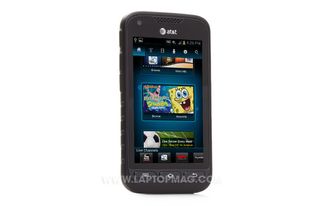
Click to EnlargeWith its rugged design, zippy performance and long battery life, the Samsung Galaxy Rugby Pro is a solid choice for smartphone shoppers looking for a device that can stand up to the rigors of everyday use and then some. The 3G-only Kyocera Hydro is a good choice for bargain hunters, but we prefer the Rugby Pro for its 4G LTE speeds and beefier specs. We just wish the camera were quicker on the draw and that it ran the latest Jelly Bean software. Overall, though, the Galaxy Rugby Pro is an excellent ruggedized smartphone.
Samsung Galaxy Rugby Pro (AT&T) Specs
| Audio formats supported | AAC, MP3, AAC+V2, AAC+ |
| Bluetooth Type | Bluetooth 4.0 |
| Brand | Samsung |
| CPU | 1.5-GHz dual-core Qualcomm MSM8960 |
| Camera Resolution | 5 MP |
| Carrier | AT&T |
| Company Website | http://www.samsung.com |
| Data | EDGE/GPRS/HSPA+/LTE |
| Display (main) | 3.5 inches |
| FM Radio | Yes |
| Form Factor | Candybar Touchscreen |
| Front Camera Resolution | 1.3MP |
| GPS | Yes |
| Internal Memory | 8GB |
| Memory Expansion Type | miniSD Card |
| Networks | 3G UMTS 850/1900/2100 MHz GSM/GPRS/EDGE 850/900/1800/1900 MHz |
| Operating System | Android 4.0 |
| Ports | microUSB, 3.5mm headphone |
| RAM | 1GB |
| Size | 5.04 x 2.65 x 0.50 inches |
| Video formats supported | H.264, H.263, 3GP, WMV, MPEG-4 |
| Weight | 4.6 ounces |
| Wi-Fi | 802.11 a/b/g/n |
